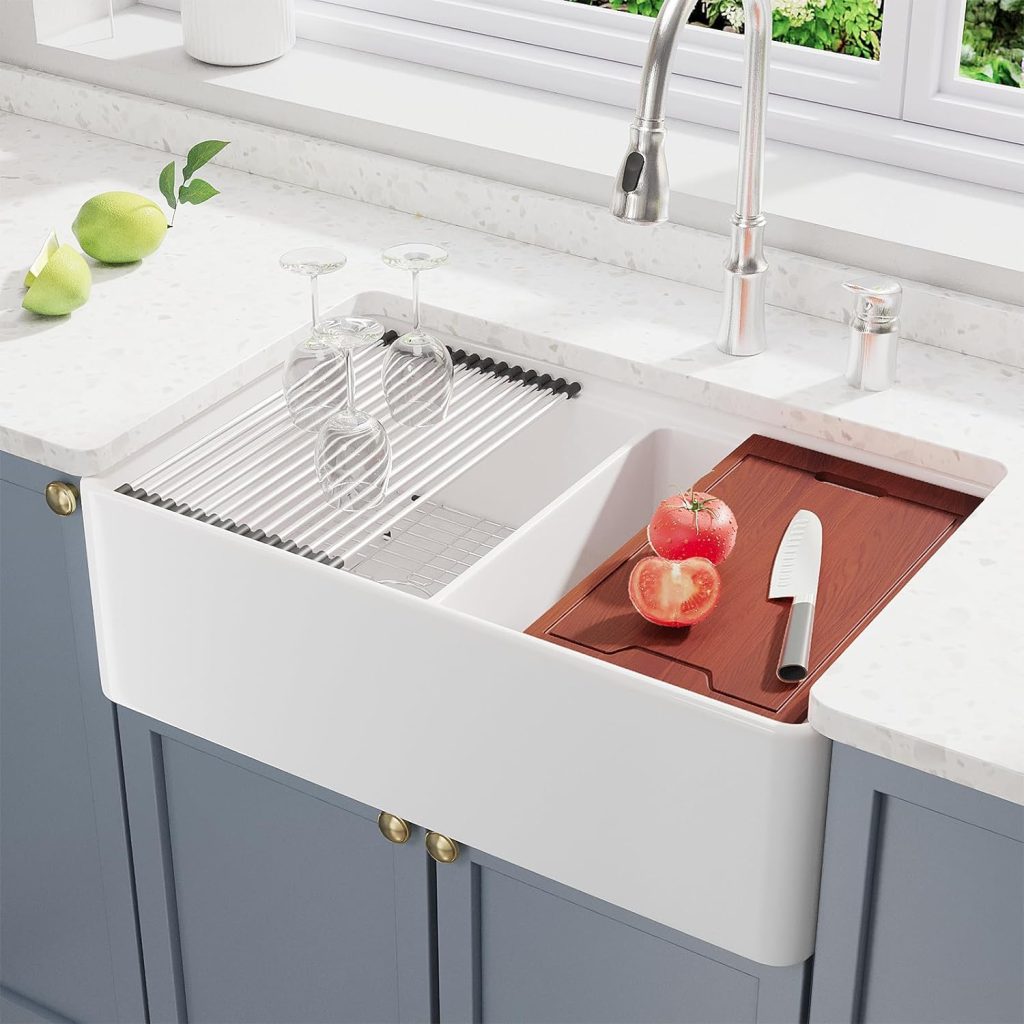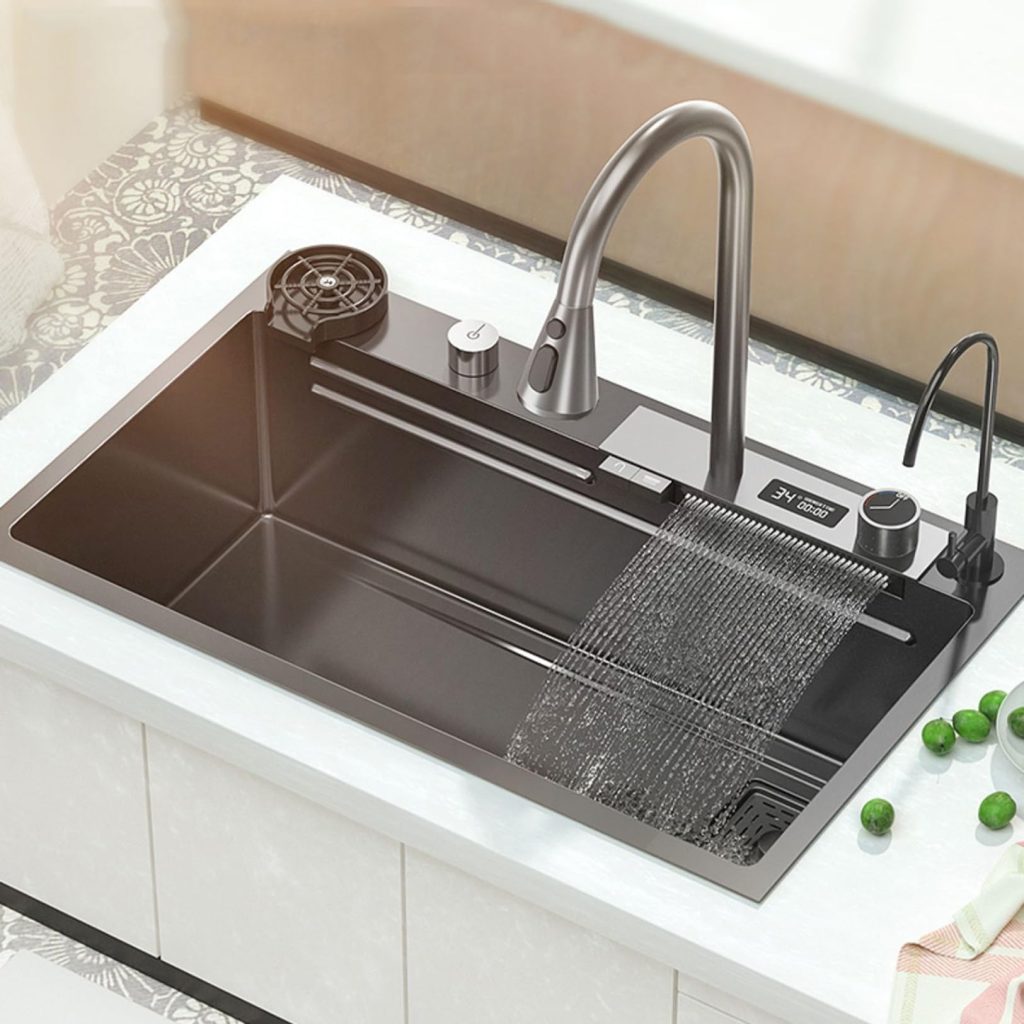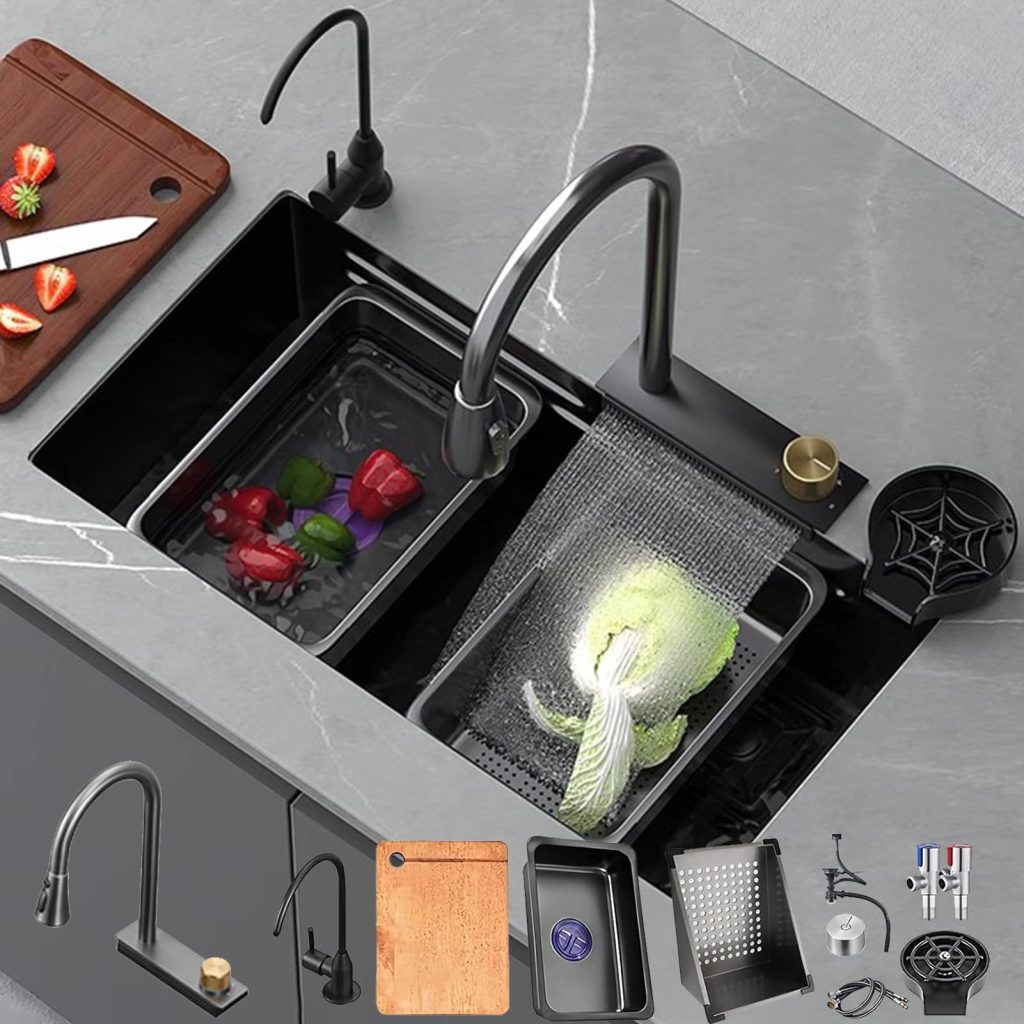When it comes to kitchen design, selecting the right sink size is a crucial decision that can significantly affect both functionality and aesthetics. Understanding the dimensions of kitchen sinks is essential for homeowners planning a remodel or new installation. This comprehensive sizing guide will break down the various sizes, styles, and considerations to help you choose the perfect kitchen sink for your needs.
Understanding Standard Sizes of Kitchen Sinks
Common Sink Dimensions
Kitchen sinks come in a range of standard sizes that cater to different kitchen layouts and user preferences. Typically, the most common dimensions for kitchen sinks are 22 inches by 30 inches for single-basin models, while double bowls often measure around 33 inches in length. The depth of these sinks usually ranges from 7 to 10 inches. It’s essential to note that these measurements can vary based on the manufacturer and style of the sink. While standard sizes fit most cabinets, custom sizes are available for unique kitchen designs.
Benefits of Standard Sizes
Choosing a standard-sized sink offers several advantages. First and foremost, they are often more readily available, which can reduce waiting times for delivery and installation. Additionally, standardized sinks are generally less expensive than custom options because they are produced in larger quantities. Standard sizes also allow for easier replacement or upgrades down the line, as many manufacturers produce sinks that fit the same dimensions. In contrast, custom sinks may require specific cabinetry adjustments, leading to additional costs and labor.

Types of Kitchen Sinks and Their Sizes
Single Bowl Sinks
Single bowl sinks are popular for their simplicity and versatility. Typically, they measure between 20 and 30 inches in width, providing ample space for washing larger pots and pans. The depth of these sinks usually varies from 7 to 10 inches, allowing room for stacking dishes or filling large containers. Homeowners who frequently cook or entertain may find single bowl sinks ideal, as they provide an unobstructed workspace for food preparation and cleanup.
Double Bowl Sinks
Double bowl sinks are another common choice, especially in busy kitchens where multitasking is essential. They generally measure 33 inches in width and are divided into two basins, allowing users to wash and rinse simultaneously. Each bowl usually has a depth similar to single bowl sinks, typically around 8 to 10 inches. This setup is especially advantageous for families or individuals who regularly cook large meals, as it enhances efficiency during the cleaning process.
Farmhouse Sinks
Farmhouse sinks, also known as apron-front sinks, have gained popularity due to their stylish design and practicality. These sinks typically measure 30 to 36 inches in width and can be deeper than traditional sinks, with depths ranging from 9 to 12 inches. The wide, shallow basin allows for easy access while accommodating larger dishes. Homeowners should consider the overall kitchen style when choosing a farmhouse sink, as it can serve as a stunning focal point in the room.

Factors Influencing Sink Size Selection
Kitchen Space and Layout
The available space in your kitchen plays a critical role in determining the appropriate sink size. Measure the area where the sink will be installed, considering both the cabinet dimensions and surrounding fixtures. A larger sink may require additional counter space, so it’s important to balance functionality with aesthetics. If your kitchen is compact, a smaller single bowl sink might be more practical, whereas a spacious kitchen could accommodate a grand farmhouse or double bowl sink.
Cabinet Size and Type
Your kitchen cabinets significantly influence the type and size of sink you can install. Standard base cabinets are typically 36 inches wide, allowing for a double bowl or larger single bowl sink. If you opt for a farmhouse sink, ensure your cabinets are designed to support its weight and dimensions. Custom cabinetry can also be tailored to fit specific sink sizes, but this often entails higher costs and extended timelines. Always consult your cabinet specifications before making any decisions about sink sizing.
Faucet and Fixture Compatibility
When selecting a kitchen sink, it’s crucial to consider compatibility with your chosen faucet and other fixtures. The height of the sink may affect how well your faucet functions, particularly if you opt for a high-arc model. Additionally, make sure there is enough clearance above the sink to accommodate items like soap dispensers or sprayers. Taking these elements into account will help ensure that your sink and fixtures work harmoniously together, enhancing both functionality and style.
Specialty Sink Sizes for Unique Needs
Prep Sinks
Prep sinks have become increasingly popular in modern kitchens, offering additional convenience for food preparation. These smaller sinks typically measure between 15 and 20 inches in width and are designed to fit seamlessly into countertop spaces. Prep sinks are often placed near cooking areas, allowing for easy rinsing of vegetables or quick cleanup during meal preparation. Installation requires careful planning regarding plumbing, as they may necessitate additional water lines.
Bar Sinks
Bar sinks are another specialty option that can enhance functionality in entertaining spaces. Measuring around 15 to 18 inches wide, these compact sinks are designed to fit into smaller areas, such as a bar cart or kitchen island. They are perfect for washing glasses or mixing drinks, providing an efficient solution for home bartenders. When considering a bar sink, keep in mind that it may require separate plumbing and drainage connections.
Utility Sinks
Utility sinks, often found in laundry rooms or garages, are larger and deeper than standard kitchen sinks. They generally measure between 24 and 36 inches in width and can reach depths of 12 to 20 inches. These sinks are designed for heavy-duty tasks like washing muddy boots or cleaning tools. Although utility sinks are not typically installed in kitchens, some homeowners may choose to incorporate them in a mudroom or adjacent area for added functionality.

Depth Considerations in Kitchen Sinks
Importance of Sink Depth
The depth of a kitchen sink is a vital factor that affects usability. Deeper sinks, usually around 10 to 12 inches, offer advantages for washing large pots, pans, and baking sheets without splashing water onto the countertop. They also provide ample space for soaking dishes or filling containers. However, very deep sinks may pose challenges for shorter individuals, making it difficult to reach the bottom. Striking a balance between depth and accessibility is essential for ensuring comfort during use.
Ideal Depth for Various Tasks
Different tasks may require varying sink depths. For example, if you frequently wash large cookware, a deeper sink would be beneficial. Conversely, if you primarily wash smaller dishes, a shallower sink may suffice. Additionally, consider the types of tasks you perform daily: rinsing produce may require less depth than soaking stubborn stains from pots. Evaluating your specific needs will help you select the ideal depth for your kitchen sink.
Choosing the Right Material for Your Sink
Common Sink Materials
Kitchen sinks are available in various materials, each with its advantages and aesthetic appeal. Stainless steel is a popular choice due to its durability and resistance to staining and rust. Porcelain and ceramic sinks offer a classic look but may chip or scratch over time. Granite composite sinks combine the beauty of stone with the durability of synthetic materials, providing an elegant yet robust option.
Impact of Material on Size
The material of your kitchen sink can also impact sizing options. Some materials, like cast iron or fireclay, may be heavier and require additional support within the cabinetry. Other materials, such as stainless steel, can be lighter and easier to install. Consider the weight and installation requirements of your chosen material, as this can dictate the type of sink you can comfortably accommodate in your kitchen.
Custom vs. Standard Sinks: Making the Choice
Pros and Cons of Custom Sinks
Custom sinks offer the advantage of tailored dimensions and unique designs that can fit perfectly into your kitchen layout. They can be crafted to suit specific decor themes and personal preferences, allowing for a truly personalized touch. However, custom sinks often come at a premium price and may require longer lead times for production and installation. Weighing these factors against your budget and timeline is essential when considering a custom option.
Benefits of Standard Sinks
Standard sinks are widely available and typically more affordable than custom options. They are easier to replace and often come with a range of styles and finishes. Standard sinks also tend to have faster installation times, which is a significant advantage for those looking to remodel quickly. If you’re working within a budget or timeline, opting for a standard sink can simplify the renovation process while still providing quality and functionality.
Final Thoughts on Kitchen Sink Sizes
Assessing Your Needs
Ultimately, choosing the right kitchen sink size depends largely on your specific needs, available space, and personal preferences. Take time to assess the tasks you perform in the kitchen and how a particular sink size will enhance your daily routines. Whether you opt for a single bowl, double bowl, or specialty sink, understanding the various dimensions and styles available will help you make an informed decision.
Conclusion
In summary, understanding how big kitchen sinks are and the various sizing options available is essential for creating a functional and beautiful kitchen. By considering standard sizes, specialty options, and factors like depth and material, you can choose the perfect sink to match your kitchen layout and lifestyle. With thoughtful planning and consideration, your kitchen sink can become an integral part of your cooking and entertaining experience, enhancing both practicality and style.

